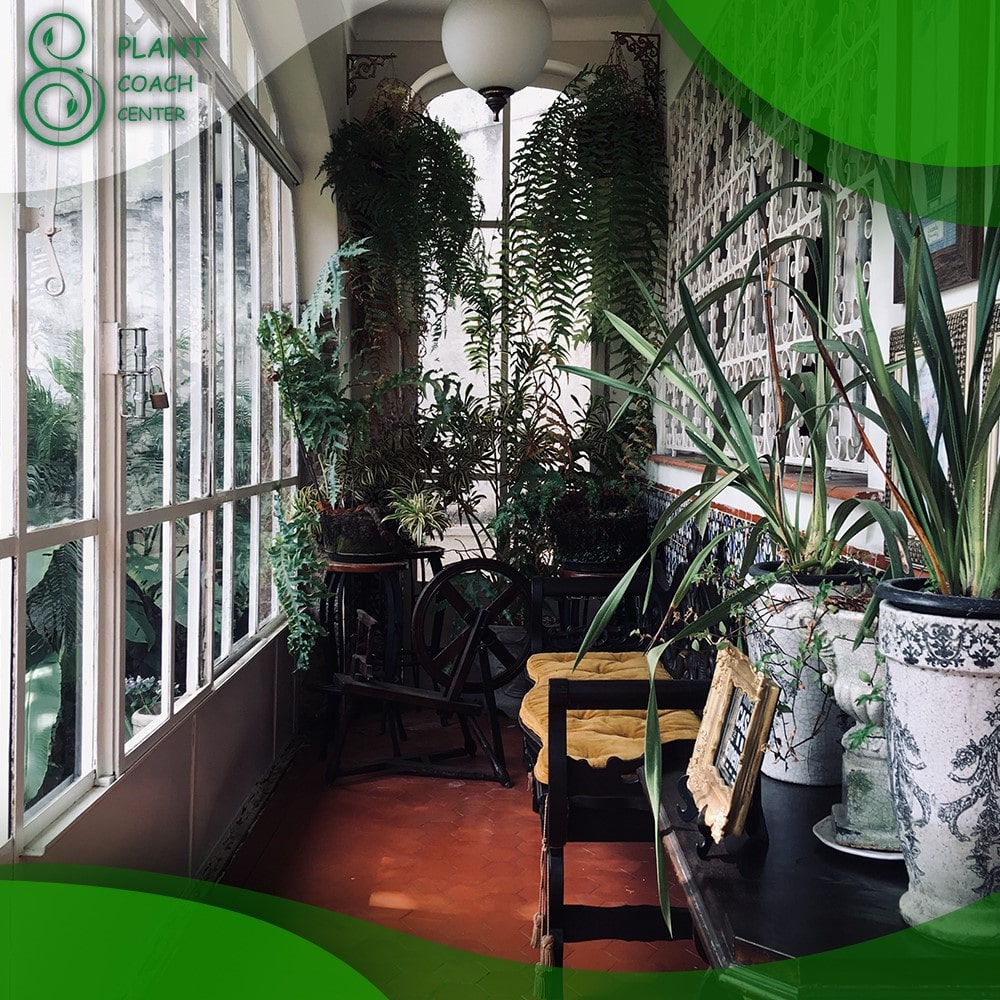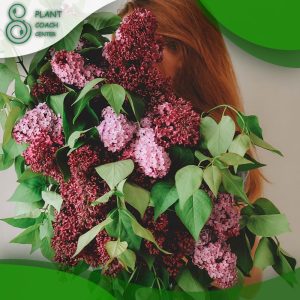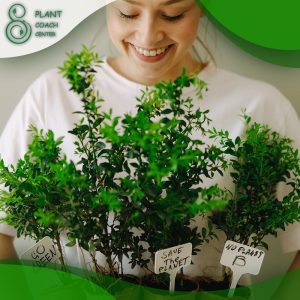When Should I Bring My Plants Inside
Welcome to the verdant world of plant care, where the rhythm of nature harmonizes with the art of nurturing. As the seasons weave their ever-changing tapestry, one question often arises: “When should I bring my plants inside?” As intricate as the flora graces our living spaces, the answer requires a delicate understanding of the interplay between weather, plant behavior, and environmental factors.
As we seek shelter from the elements, our beloved leafy companions seek refuge during pivotal times. In this exploration, we embark on a journey through the nuanced cues and triggers that prompt the migration of plants from the great outdoors to the cozy confines of our homes. From deciphering the language of temperature thresholds to interpreting the subtle shifts in daylight, we’ll uncover the secrets that plants whisper to us, guiding our decisions as conscientious caretakers.
Join us as we decode the symphony of signals that nature orchestrates, unveiling the intricate choreography that prompts us to open our doors and windows and inviting the green world to join us inside.
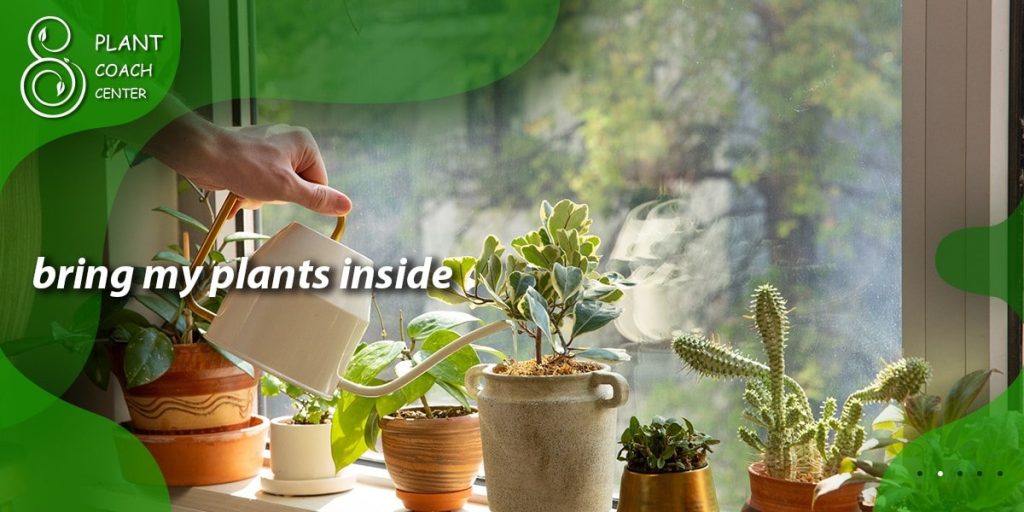
Seasonal Signals
As the calendar pages turn and the world outside transitions through its annual cycles, plants respond to subtle shifts in temperature, light, and moisture. Understanding these seasonal signals is fundamental to deciding when to bring your plants indoors. During the fall, the waning intensity of sunlight and cooler temperatures signify that winter’s chill is approaching.
For many plants, this decrease in light triggers a reduction in growth, a natural preparation for the dormant months ahead. Similarly, the impending frost sends a clear message that it’s time to gather your outdoor plants and provide them shelter.
On the other hand, as spring unfurls its tender buds, the increasing daylight and warmth rejuvenate plants, coaxing them back to life. Attention to these distinct rhythms allows you to anticipate the right moments to transition indoors, ensuring your plants’ safety and well-being. By tuning in to nature’s symphony, you can harmonize your plant care routine with the changing seasons and create an environment that sustains growth, even when the world outside is touched by frosty fingers.
Temperature Thresholds
Just as we seek shelter from extreme weather, plants have their own temperature preferences determining when they should be moved indoors. Different plants exhibit varying levels of cold tolerance, making it essential to understand the specific temperature thresholds that trigger the need for protection.
As the mercury drops, tropical plants and sensitive perennials, accustomed to warmer climates, become vulnerable to frost damage. Generally, temperatures hovering around 32°F (0°C) are dangerous for many plants, especially those with delicate foliage. However, more cold-hardy species might withstand lower temperatures for shorter periods.
To make informed decisions, it’s vital to research the temperature preferences of your specific plant varieties. Keep an eye on weather forecasts and be ready to take action when the thermometer threatens to dip into risky territory. Providing a buffer by bringing your plants indoors a little earlier than necessary can also be wise, as sudden temperature drops can catch you off guard.
Remember, a cozy spot by the window or under a grow light can provide the warmth and protection your plants need as the outdoor climate turns chilly. By recognizing the temperature thresholds that spell potential trouble for your plants, you ensure they’ll thrive in the indoor haven you’ve thoughtfully prepared.
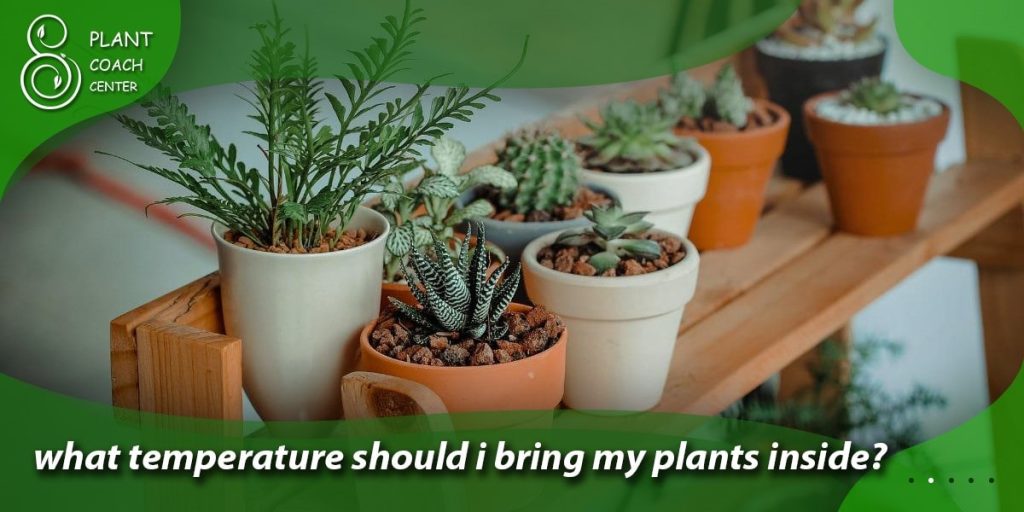
Daylight Dynamics
The dance of daylight orchestrates the intricate routines of plant life, signaling the perfect time to move them indoors. As the seasons shift, so do the lengths of light and darkness. This fluctuation in day length triggers a series of physiological changes in plants.
During the shorter days of fall and winter, many plants enter a state of dormancy, conserving energy and slowing their growth. This natural response prepares them for the harsher conditions that lie ahead. Conversely, the lengthening days of spring awaken their dormant powers, urging them to sprout new leaves and send shoots skyward.
Observing these changes in daylight dynamics can serve as a valuable cue for when to bring your plants inside. When you notice that your plants show reduced growth, fewer leaves, or a general slowdown in their development, consider relocating them to a more controlled indoor environment. Additionally, plants that thrive in bright, direct sunlight during the warmer months might struggle when the sun’s intensity wanes.
Moving them indoors before they exhibit signs of stress ensures they continue receiving the light they need for optimal health. Understanding the symphony of light that guides your plants’ growth empowers you to make the right decisions about their indoor accommodations.
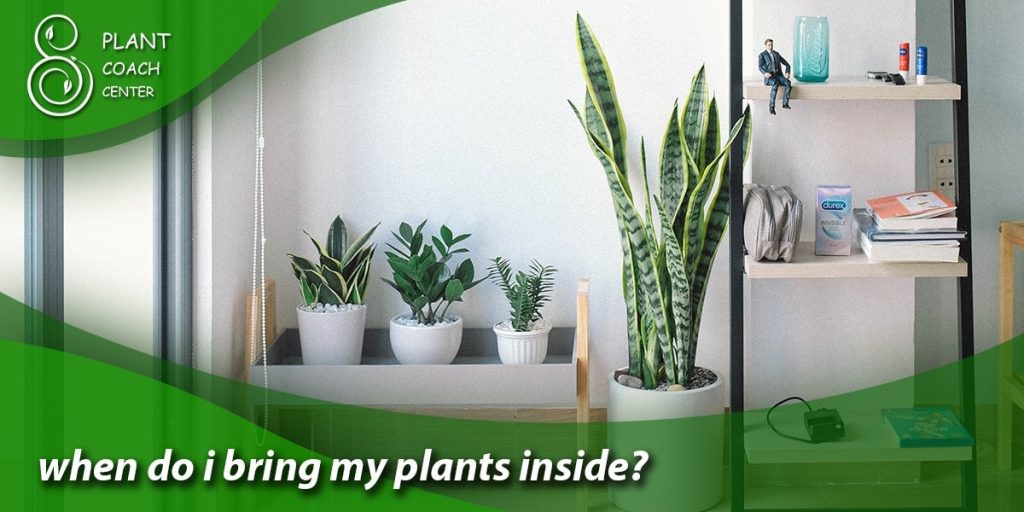
Rainfall and Humidity
While rainfall and humidity are essential for plant health, excessive moisture can also be a catalyst for problems that prompt the move indoors. As the seasons change, so does the balance of rain and humidity in the outdoor environment.
Fall and winter often increase rainfall, which can saturate the soil and lead to root rot or other fungal issues. In regions with high humidity, prolonged wet conditions can exacerbate these problems. Plants that thrive in drier conditions may struggle when faced with constant dampness.
When you notice persistent rainy spells or high humidity levels, it’s time to consider bringing your plants inside. Providing a controlled indoor environment can help mitigate the risks associated with excess moisture. Before relocating your plants, inspect their foliage and soil for signs of water-related stress.
Wilting, yellowing leaves, or a musty smell emanating from the ground are all potential indicators that your plants are getting too much water. By monitoring rainfall patterns and humidity levels, you can preemptively safeguard your plants from water-related woes and provide the care they need to flourish in drier indoor conditions.
Plant Behavior Signs
Plants have a language all their own, communicating their needs through subtle changes in behavior and appearance. Deciphering these signs is critical to knowing when to bring them indoors. One of the most evident signals is wilting. When outdoor conditions become too harsh—whether due to extreme temperatures, lack of water, or excess sun exposure—plants often display drooping leaves as a plea for help. Discoloration is another telltale sign; leaves that turn yellow, brown, or develop spots might indicate stress.
Observing these behavioral changes and taking them as prompts for action can help you decide when to bring your plants inside. Furthermore, some plants might exhibit distress by shedding leaves or ceasing to flower. These changes in growth patterns can signify a struggle to adapt to changing outdoor conditions.
By being attuned to your plants’ language and responding promptly, you can provide the intervention they need to thrive indoors. Consider it a conversation between you and your plants that guides your decisions and ensures their well-being throughout the shifting seasons.
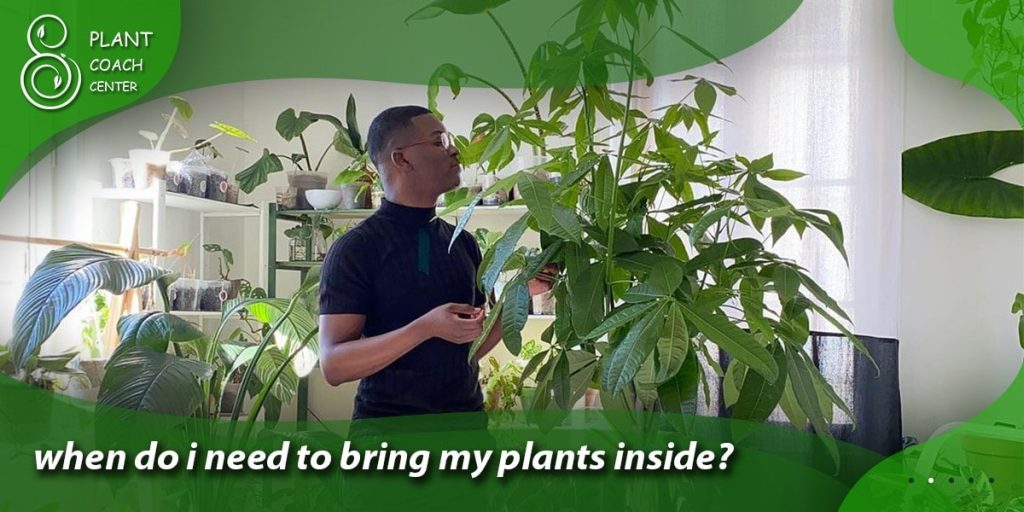
Pest and Disease Vulnerability
Nature’s delicate balance also includes the constant presence of pests and potential diseases that can affect outdoor plants. As the seasons evolve, so do the risks associated with these unwelcome visitors. Transitioning from outdoor to indoor living can safeguard against escalating infestations and outbreaks.
Fall and winter can provide a breeding ground for certain pests that thrive in cooler temperatures, such as aphids and spider mites. These creatures can rapidly multiply and spread across your garden, causing irreparable damage. Moving your plants indoors before these infestations take hold creates a barrier against their onslaught. Additionally, damp weather conditions often accompanying seasonal shifts can foster mold growth, mildew, and other diseases that attack plant foliage.
When you notice the telltale signs of pest activity or the appearance of unusual spots, blotches, or fungal growth, it strongly indicates that bringing your plants indoors is a prudent decision. Once inside, you can closely monitor their health and provide targeted treatments if necessary, shielding them from the outdoor threats that could otherwise compromise their vitality. By understanding the ebb and flow of pest and disease vulnerabilities, you safeguard your plants and cultivate a thriving indoor garden sanctuary.
Special Care Plants
Every plant has unique preferences and requirements; some are particularly sensitive to changing seasons. These individual care plants often hail from tropical or subtropical climates, making them more vulnerable to cold temperatures and harsh conditions. Bringing them indoors during seasonal transitions is crucial to maintaining their well-being.
Tropical plants, such as orchids, ferns, and certain varieties of succulents, thrive in consistently warm and humid environments. As temperatures drop, they may struggle to survive outdoors. By identifying these unique care plants in your collection, you can proactively plan their move indoors before the first frost. Additionally, potted herbs or other edible plants flourishing in the outdoor garden may need shelter when the colder months approach.
Prioritize the needs of these unique plants by providing them with a dedicated indoor space where you can replicate the conditions they prefer. Consider humidity levels, temperature control, and proper lighting to ensure their continued growth and health. By accommodating these unique care plants in your indoor setup, you’re not just preserving their vitality but also creating a thriving microcosm of diverse flora within the confines of your home.
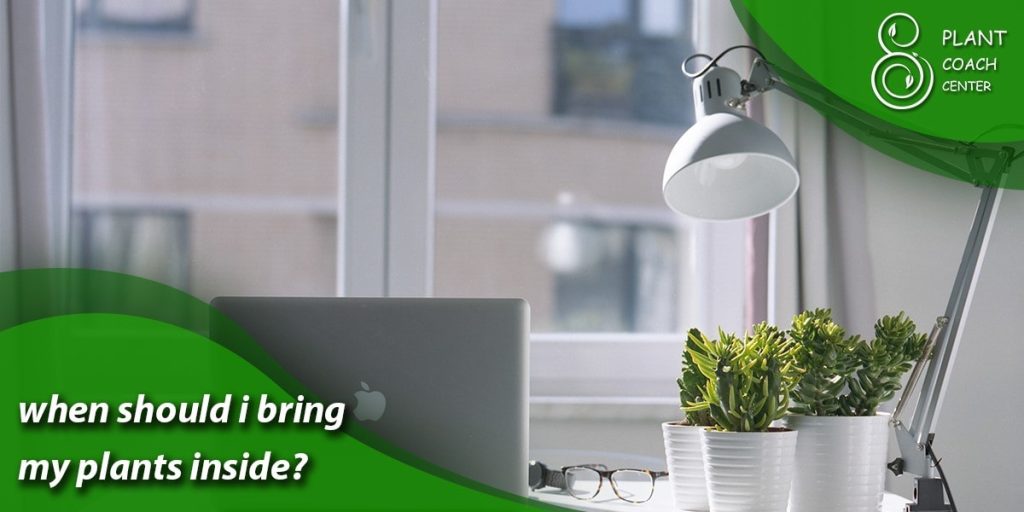
Conclusion
In the grand theater of nature, deciding when to bring your plants indoors becomes a choreography of understanding, observation, and care. As the seasons gracefully transition, your role as a guardian of green life comes to the forefront. By heeding the whispers of temperature shifts, daylight nuances, and subtle plant behavior, you elevate your plant care routine from mere responsibility to an art form.
Recognizing the delicate balance between outdoor challenges and indoor havens allows you to orchestrate a symphony of growth that transcends the changing weather. So, when the winds of change rustle through your garden, remember that the answers lie in science and the harmonious rapport you establish with your plants. Explore more insights and guidance on the fascinating world of plant care at PlantCouchCenter.com, where our shared journey to nurture and cultivate the botanical wonders of our planet continues.
When should I move plants indoors?
As temperatures drop, around 32°F, or if signs of stress or pests emerge.
How do I know if my plant needs indoor shelter?
Observe wilting, color changes, or pest activity as signs to consider relocating.
Which plants require special care during transitions?
Tropical and sensitive varieties benefit from indoor shelter when seasons change.


